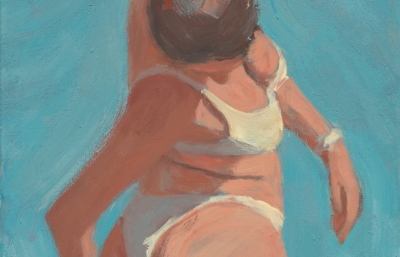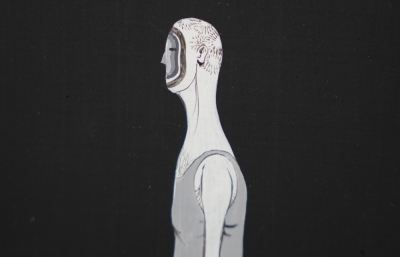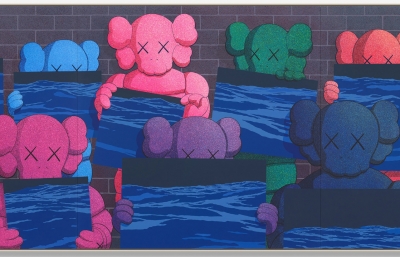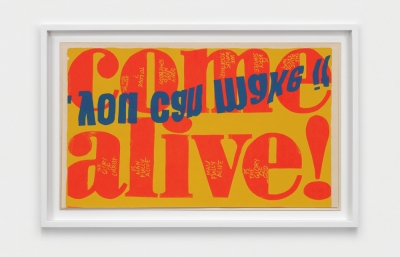Tauba Auerbach recently completed a tour of duty at sea, in what she aptly describes as a “freakily challenging painting.” The historic fireboat known as the John J. Harvey got a new look with Auerbach’s interpretation of dazzle camouflage, the inspirational WWI ship-painting tactic used to distort optics and confuse the enemy. The connection to modern art movements such as Cubism and hard-edge painting is clear, and Auerbach’s modern take on dazzle camo was inspired by the fluid dynamics of water and the wake patterns that trail boats of all sizes. She used paper marbling in pre-production to mimic the flow of water and create the design for her jarring red-and-white aquatic masterpiece.
With a sigh of triumphant relief, the artist explained, “This was a truly athletic project. I painted with a mostly female crew in Caddell Dry Dock in Staten Island for three weeks. We had zero days off and it was damn hard—under the sun, climbing scaffolding, wearing so much protective gear we could hardly see or hear each other.” She went on to describe her crew as heroes, and the project is inarguably heraldic in magnitude, especially considering the upswell of enormous, floating public art projects, and the typical gender imbalance in this type of commission opportunity.
Auerbach’s project, titled Flow Separation, was commissioned by the Public Art Fund in NYC, and is genuinely accessible, offering,free trips until October 7, and then be on view at Pier 66a in Chelsea until May 12, 2019. Beyond the inevitable selfie-at-sea opportunities that will undoubtedly tempt visitors, the artwork not only dazzles, but instructs. As Public Art Fund points out, “it threads together notions of innovation, technology and abstraction, while it also invites us to remember this devastating world war.” A reminder of past global destruction, and, perhaps, a timely, cautionary tale. —Kristin Farr
This text will also be published in our upcoming Fall 2018 issue, on newsstands in early September 2018.









